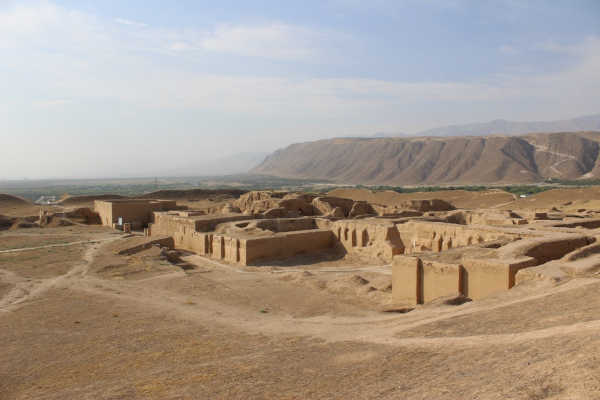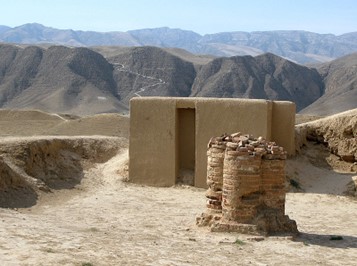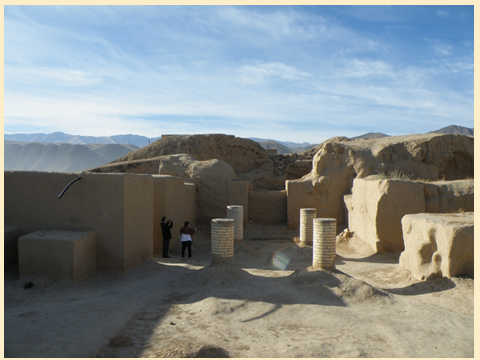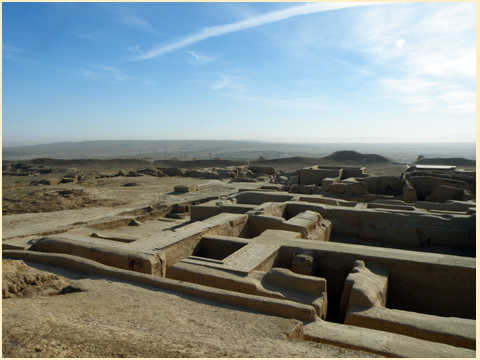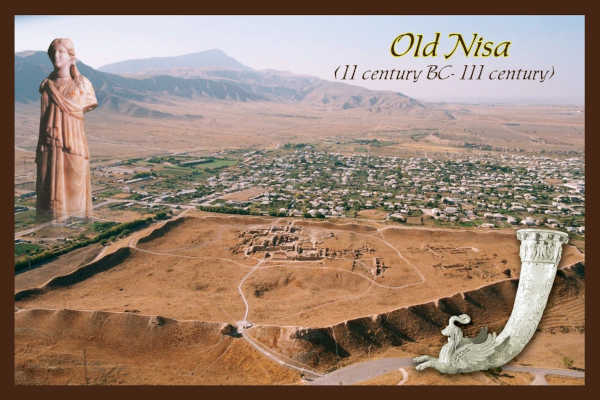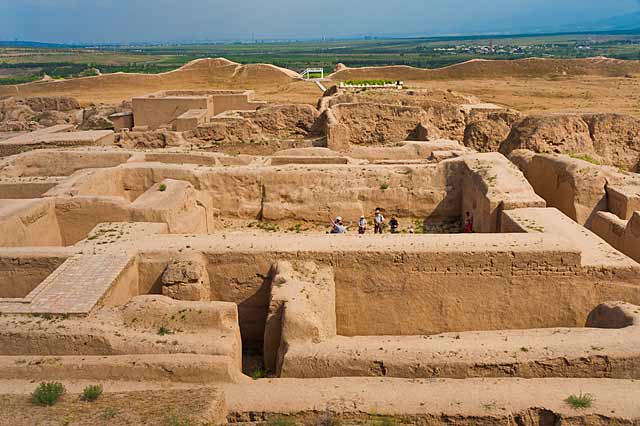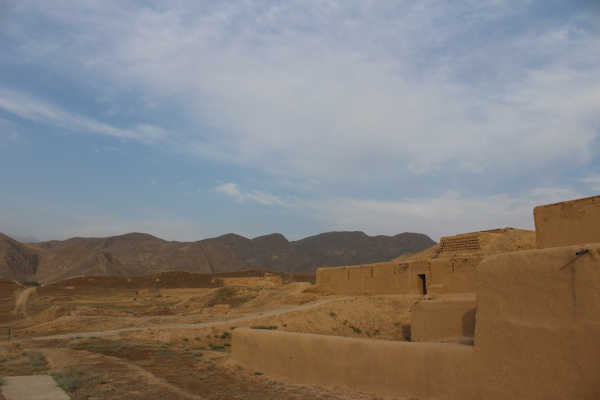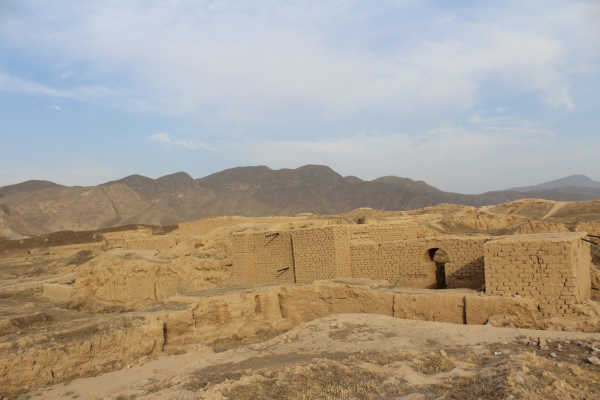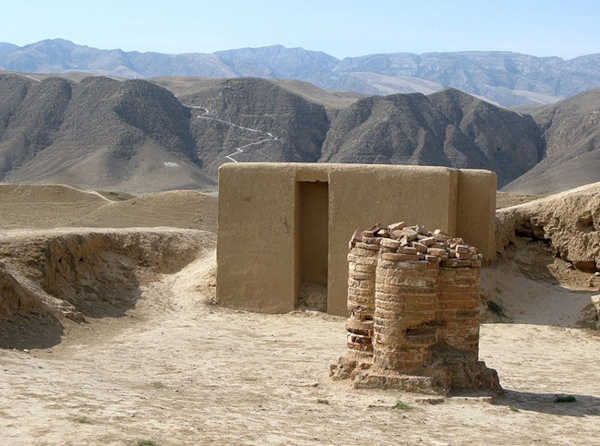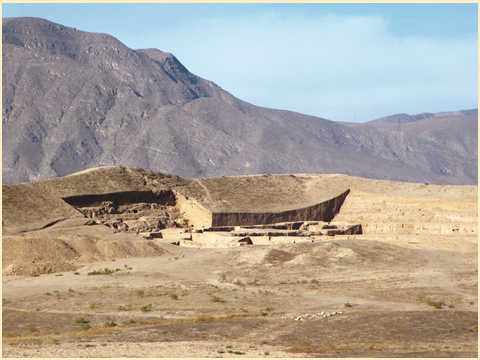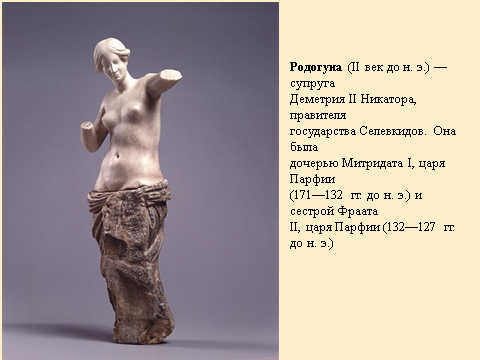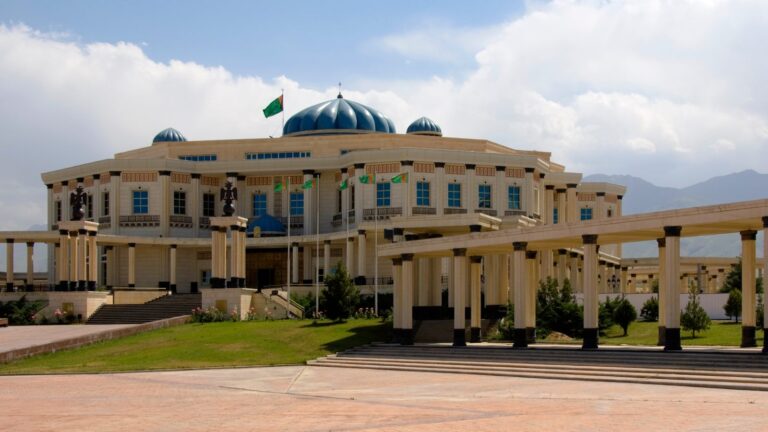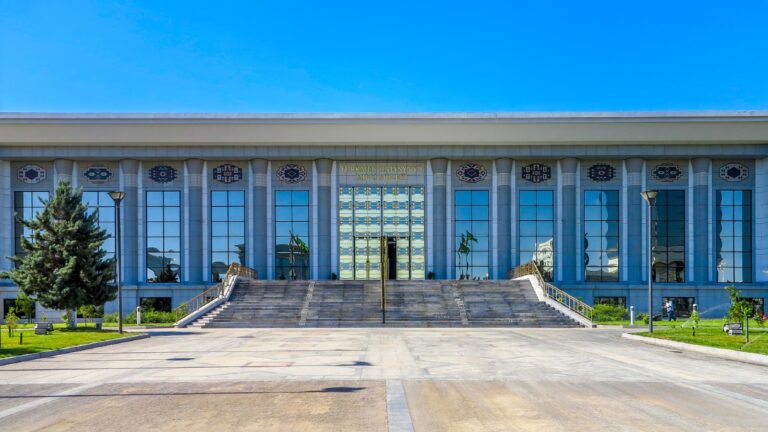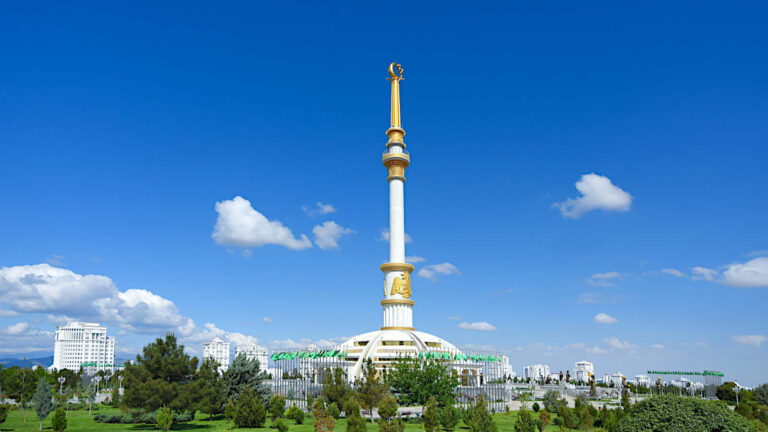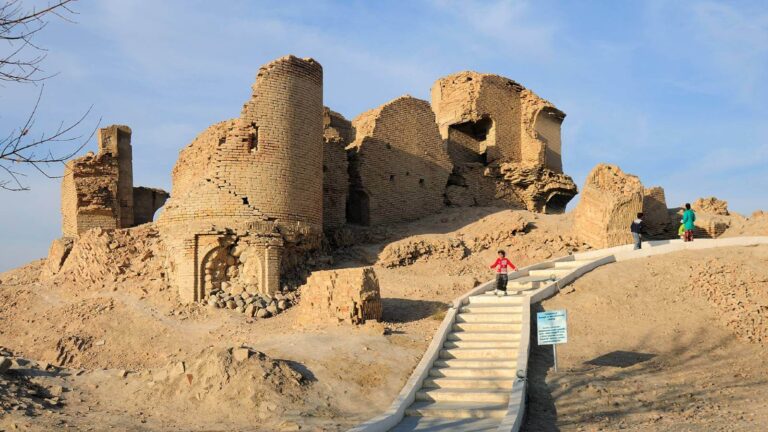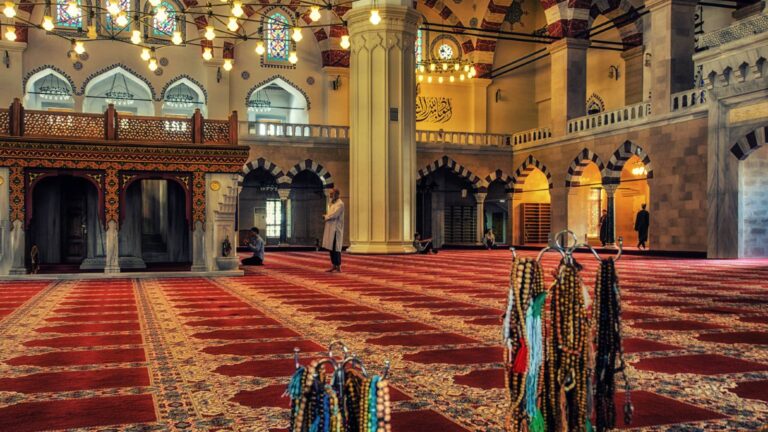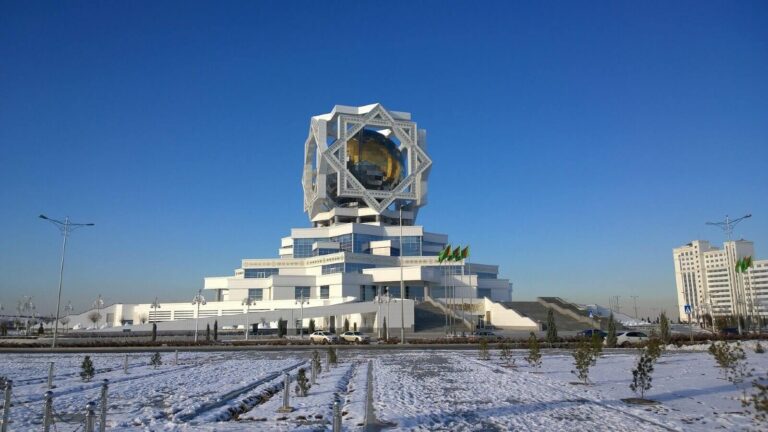Getting There
Located 18 km west of the city of Ashgabat, on the outskirts of the village of Bagir, the attraction can be reached either by taxi or city buses.
What to Expect
Old Nissa is a secluded royal fortress on a hill called Mithridatkert, founded by Mithridates I in the 2nd century BC. Until the 1st century AD, it served as a burial place for the Parthian kings, until the younger line of the Arshakid dynasty ascended the throne and Arbela became a royal tomb.
There are several buildings in Old Nissa: the Square House, a building that served as a royal treasury, was built in the II-I centuries BC. It was a building measuring 60 by 60 meters, without windows, with a central open courtyard around which there were 12 rooms. The most famous finds in the “house” are the so-called “statue of Rodoguna”, “the statue of the eastern goddess” and numerous rhytons.
The Square Hall is the ceremonial hall of the royal residence, rebuilt in the 1st-2nd centuries AD from an older building. The dimensions of the hall are 20 by 20 meters, it is built on a two-meter platform of adobe bricks, the walls are 10 meters high and 3 meters thick. Presumably, this entire complex served as a fire temple.
The Round Temple is a round structure 17 meters in diameter, the interior was two-tier: the first was faced with smooth white ganch (clay mixed with gypsum), the second tier was divided by small columns with clay statues in niches in between.
History
In the IV century BC, the Parfena region became part of the state of Alexander the Great, who founded the city of Alexandropol (now Old Nissa) next to the fortress of Nissa (New Nissa). After Alexander’s death, the region of Parthena for a short period passed to the Hellenistic state of the Seleucids.
In 250 BC the governor of Partiena Andragora separated from the central government. In 245, the local semi-nomadic tribes of Dakhs-Parnis, scattered across the Caspian steppes, revolted under the leadership of two brothers – Arsak and Tiridat. They seized power in Parthien, making Nissa their capital. So the foundations of the great Parthian state were laid. This was the heyday of the culture of Parthia in the III-I centuries BC, which included numerous archaeological finds of the middle of the XX century.
These are the ruins of palace and temple architecture with monumental clay sculptures, marble statues, a whole collection of cult ivory rhytons with relief ornaments, jewelry and small plastic made of metal and terracotta, weapons, dishes, etc. Aramaic alphabet in the Parthian language.
The historical significance of the Parthian fortresses of Nissa lay in the fact that the Nissa Fortresses were located at the crossroads of important trade and strategic routes. Fragments of archaeological structures that have survived to this day clearly show how strong the mutual influence of the cultures of the regions of Central Asia and the Mediterranean was.
The Parthian state was the most powerful and influential civilization of the ancient world, opposing the all-powerful Rome at that time, and prevented the advance of the Roman legions eastward. Nissa, being the capital of the Parthian Empire, symbolized its power.
The complex is located just 18 km west of the city of Ashgabat and consists of two settlements – New Nissa, a Parthian city in the valley, and Old Nissa, a royal fortress on a hill.
Old Nissa, a detached royal fortress on a hill, bore the name Mithridatkert, founded by Mithridates I or Mithridates II in the II century BC. Until the 1st century AD served as the burial place of the Parthian kings, until the younger branch of the Arshakids ascended the throne and Arbela became the royal tomb. The area of the settlement is 17 hectares, it contains several structures:
- Square house
- Square hall
- Round temple
Facilities Available
The nearest cafes and grocery stores are located in the village of Bagir, next to Old Nissa. Public transport to Bagir runs regularly. The attraction provides Turkmen and Russian-speaking guides. English-speaking guides could be arranged in advance through a local tour company.

